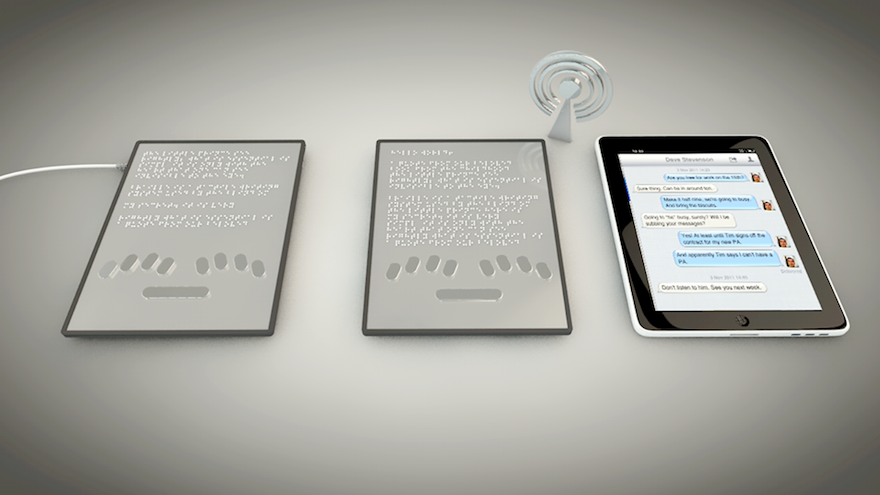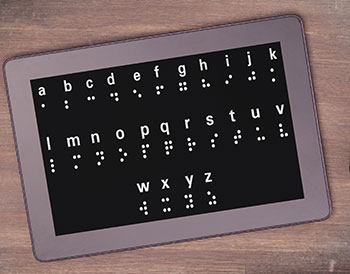Voice-Activated Assistive Devices: Supporting the Visually Impaired
Discover Innovative Devices Created for the Aesthetically Impaired
The advancement of innovative devices for the aesthetically impaired stands for a substantial advancement in availability and freedom. Technologies such as smart glasses with AI abilities and mobile applications made to supply auditory summaries are improving day-to-day experiences for individuals.
Smart Glasses for Navigating

Smart glasses designed for navigating are reinventing the method visually damaged individuals engage with their environment. These innovative tools make use of a mix of electronic camera innovation, expert system, and auditory responses to supply real-time information regarding environments. By utilizing challenge discovery systems, wise glasses can alert users to prospective hazards, making it possible for much safer wheelchair in both familiar and unfamiliar settings.
The combination of GPS modern technology even more improves navigating capabilities, enabling customers to obtain auditory instructions as they move. This hands-free approach not just fosters self-reliance but likewise empowers aesthetically impaired individuals to browse city landscapes with increased self-confidence. Furthermore, numerous wise glasses are equipped with functions that determine sites and road indicators, providing contextual details that enhances the individual experience.
In addition, the development of these gadgets is constantly advancing, with companies working to enhance the precision of things acknowledgment and broaden the series of navigational attributes. As wise glasses come to be more easily accessible and cost effective, they hold the prospective to dramatically change every day life for aesthetically impaired individuals. Eventually, these innovative devices stand for an essential action towards inclusivity, offering improved mobility and a better feeling of freedom for individuals navigating the world around them.

Mobile Application for Daily Living
Just how can mobile applications enhance the daily lives of visually damaged people? Mobile apps are revolutionizing the method visually impaired individuals browse their settings, take care of daily jobs, and accessibility information. These applications supply important assistance through different capabilities, cultivating independence and enhancing top quality of life.
Numerous cutting-edge mobile apps are developed especially for day-to-day living. Apps like Be My Eyes link visually damaged customers with sighted volunteers using video phone calls, enabling them to receive real-time assistance with tasks such as reading tags or navigating unknown spaces. Similarly, Seeing AI, created by Microsoft, makes use of fabricated knowledge to define environments, checked out text, and determine things, effectively transforming a mobile phone right into a powerful device for daily help.
Furthermore, navigation applications tailored for the aesthetically impaired, such as Aira and BlindSquare, offer audio-based directions and ecological information, enabling customers to traverse their surroundings safely and with confidence. Beyond navigating and instant support, mobile applications additionally sustain organization and job monitoring, with functions that aid users establish pointers, develop order of business, and track appointments. In recap, mobile applications work as essential sources, equipping visually impaired people to lead more independent and fulfilling lives.
Wearable Technologies for Support
Empowerment through modern technology is progressively apparent in the world of wearable gadgets developed to help aesthetically impaired individuals. These innovative devices integrate seamlessly right into day-to-day live, boosting navigating and supplying vital responses to individuals. For circumstances, clever glasses furnished with cameras can recognize faces and check out text out loud, allowing customers to engage even more confidently in expert and social setups.
Another nhs eye test near me significant innovation is making use here are the findings of haptic feedback systems in wearable gadgets. These systems use vibrations or other tactile signals to communicate information concerning the customer's environment, such as barriers or modifications in surface, boosting mobility and safety and security. Wearable technologies also consist of wristbands that link to mobile phones, informing customers to alerts via refined vibrations, hence boosting connection without dependence on visual cues.
As these technologies proceed to develop, they are not only improving self-reliance for visually impaired people however also fostering a greater sense of incorporation in culture. By connecting the void between challenges faced in day-to-day living and the potential for autonomy, wearable technologies function as critical tools in the quest for equal rights and empowerment for those with aesthetic impairments.
Sound Summary Devices
Sound description tools play a critical role in boosting access for visually impaired individuals, giving them with the capability to involve with visual media. Braille displays and notetakers. These tools provide narrated summaries of essential aesthetic elements in movies, television shows, and live performances, making certain that individuals can fully comprehend the context and feelings conveyed via visuals
Audio description can be incorporated right into numerous platforms, consisting of streaming services, cinema testings, and live theater. Lots of preferred streaming services currently include audio description as an accessibility feature, enabling audiences to pick it conveniently. In addition to mainstream media, specialized applications likewise exist, supplying audio summaries for art exhibitions, galleries, and other social events.
The effectiveness of audio description rests on the ability of the storytellers, that should convey visual information succinctly without interfering with the initial sound. Developments in this area are also paving the method for even more customized experiences, where individuals can adjust the level of detail and pacing according to their choices.
Braille Innovations and Tools
Braille advancements and devices have substantially transformed the method aesthetically damaged individuals engage with message and details. Modern innovations have actually led to the development of flexible tools that boost literacy and independence among customers.
Furthermore, portable Braille notetakers incorporate standard Braille input with modern-day capabilities, facilitating note-taking, scheduling, and record editing on the go. Screen readers for the blind. These compact devices often feature text-to-speech abilities, connecting the space between Braille and acoustic info
In addition, ingenious Braille printers have arised, permitting individuals to create Braille tags, records, and instructional products effectively. This ease of access read here fosters greater involvement in instructional and expert atmospheres, eventually promoting inclusivity.
In addition, research study into clever Braille modern technologies proceeds to increase. Instruments that integrate fabricated knowledge are being checked out to offer real-time navigation support and contextual information, improving the individual experience in varied settings. Overall, these technologies show a commitment to empowering aesthetically impaired individuals via innovation, ensuring they can quickly gain access to and engage with the globe around them.

Verdict
The improvement of cutting-edge tools for the aesthetically impaired significantly enhances freedom and high quality of life. These technologies not only foster higher inclusion however also promote freedom in daily tasks, ultimately contributing to a much more accessible and fair society for aesthetically impaired people.
As smart glasses end up being extra cost effective and accessible, they hold the prospective to significantly transform everyday life for visually damaged users. Mobile apps are transforming the means visually impaired users navigate their atmospheres, take care of day-to-day tasks, and accessibility details. Apps like Be My Eyes connect visually damaged customers with sighted volunteers via video clip calls, enabling them to get real-time support with jobs such as reading labels or browsing unknown areas.Furthermore, navigating apps tailored for the visually impaired, such as Aira and BlindSquare, provide audio-based directions and environmental information, enabling users to traverse their surroundings safely and confidently.The improvement of innovative tools for the visually impaired significantly improves freedom and top quality of life.